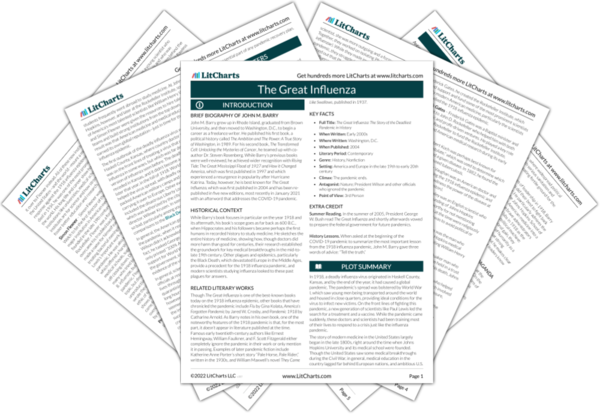The experience of Australia again illustrates the effectiveness of quarantine as a method of slowing a pandemic, but it also shows the need for total vigilance to that quarantine. As with Spain, the press in Australia exposed some uncomfortable truths about the virus that caused panic in the short-term. Barry seems to argue, however, despite the short-term shock of these newspaper articles, it was ultimately better to face the truth than to try to hide it.
